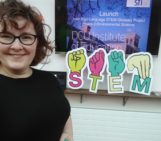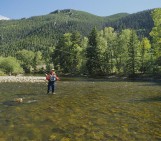Jim Ehleringer is Director of the Stable Isotope Ratio Facility at the University of Utah in Salt Lake City in the US. In the past few years he has been developing a method for deducing people’s diets and travel history from a sample of their hair. Here, he talks to the EGU press office about his research.
Thanks for agreeing to chat, Jim. Can you tell me a bit about how your project started?
This project began by looking at animals and we were interested in animal diet and migration. My colleague Thure Cerling was studying game animals in Africa and we were interested in wandering elephants. The elephants are supposed to spend their time in the park, which has C3 vegetation, but often they leave the park at night and visit the farmlands, which have C4 crops. We could see differences between what they were supposed to be eating and what they were actually eating [by looking at their hair]!
And now you’ve progressed to humans?
It wasn’t long before we started thinking about changes in human diet and in human movements. The first examples were me and my colleagues. As we travelled to new places we would shave and we would record the food we ate and we would look to see if there was a change in the isotopes within our beards as we travelled to China, to Mongolia, to South America, and back to the US.
Could you explain a bit about how your method works?
We use scalp hair as a linear recorder of an individual’s travels and diet. The carbon, nitrogen, sulphur and oxygen in the hair is only produced in the hair follicle and once it is extruded there is no further change. We have now verified a stable isotope model that says something about the regions of origin and travel histories of humans and we’re applying this to previously unidentified murder victims.
So how do you distinguish between the effects of travel and diet?
We can use carbon and sulphur to tell us something about food sources; oxygen tells us something about drinking water. We know that there are variations in the isotopic composition of water across the continents. We then link this with a mathematical model and use the term ‘isoscape’ to describe the maps that we make.

The four regions visited by ‘Saltair Sally’ prior to her death. The blue dot marks Salt Lake City. Oxygen isotopes in her hair were used to track her movements. (Credit: Jim Ehleringer)
How big are the variations in oxygen isotope ratios across a country?
It depends on the size of the country. There’s not much variation across the Netherlands, but if I were to take a map of Europe I would find that Vienna is quite a bit different from Paris, which is quite a bit different from London. There’s probably a change of 16 parts per thousand across Europe and our resolution is about 0.2 parts per thousand. So we get maybe eighty resolution units.
Does the type of hair matter?
It all depends on the length of your hair. Hair grows at the same rate – about one centimetre per month – but men tend to keep their hair shorter and women tend to keep their hair longer. The resolution is a function of mass. Typically what we do is to take ten to twelve hairs and bundle them. Then we can get a time resolution of about seven to ten days.
And you’ve applied these techniques to murder cases?
Yes, we’ve now had enough time to develop and test the model and apply it and see some results. The first case was of a murder victim known as ‘Saltair Sally’. Law enforcement discovered hair, bones, and a necklace in a shallow grave near the Great Salt Lake. [From our analysis] we found that she was a resident of nearby Salt Lake City, but that she had travelled frequently. We used our model to predict where she had travelled and found that she had visited four regions. Approximately a year before her death she visited an area which is consistent with Portland, Seattle and the northwest. In fact, she had visited her mother in Seattle and it was by identifying these potential places that law enforcement was able to make the link. This [method] is now being applied on a routine basis in the US.
Jim presented his work at the EGU General Assembly 2014.
By Tim Middleton, University of Oxford
Reference:
Ehleringer et al., 2014: Evaluating O, C, and N isotopes in human hair as a forensic tool to reconstruct travel. Geophysical Research Abstracts, Vol. 16, EGU2014-1436-1.



